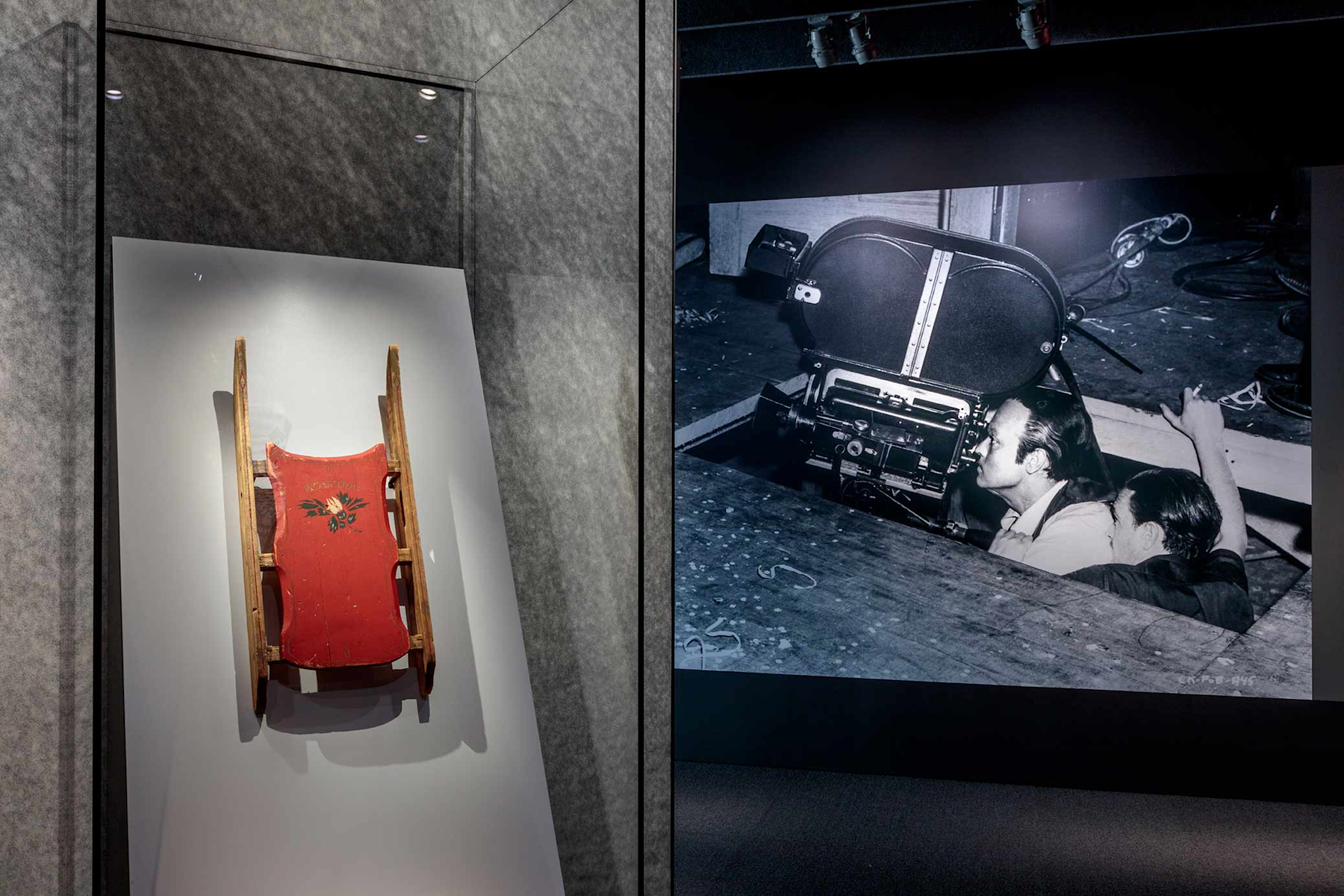
Core Collection. Production Files, Margaret Herrick Library, Academy of Motion Picture Arts and Sciences. Photo by Alexander Kahle
About the Exhibition
Orson Welles was 25 years old when he left the world of radio to make his debut feature at RKO Pictures as director, cowriter, star, and producer of Citizen Kane. Welles forever changed the face of cinema with his innovative approach to nonlinear narrative structure, expressive sound and cinematography, and groundbreaking special effects. He would later credit this to his “ignorance” as a new filmmaker and Hollywood outsider: “I didn’t know what you couldn’t do.” Welles relied on collaborators such as legendary cinematographer Gregg Toland and optical effects virtuoso Linwood Dunn, pushing their talents to new limits in service of his vision. Citizen Kane was nominated for nine Academy Awards and won for Original Screenplay (Welles, Herman J. Mankiewicz).
Visitors to the gallery encountered a number of key objects including a “Rosebud” sled created for the film, a collection of lenses owned by cinematographer Toland, and an original Citizen Kane script annotated by Mankiewicz. The gallery also focused on the innovative tools and techniques used to create the film, including the optical printer invented by Dunn.
The first iteration of the Significant Movies and Moviemakers gallery featured a six-gallery experience showcasing Citizen Kane (USA, 1941), Bruce Lee, Oscar Micheaux, Thelma Schoonmaker, Emmanuel Lubezki, and Real Women Have Curves (USA, 2002).

